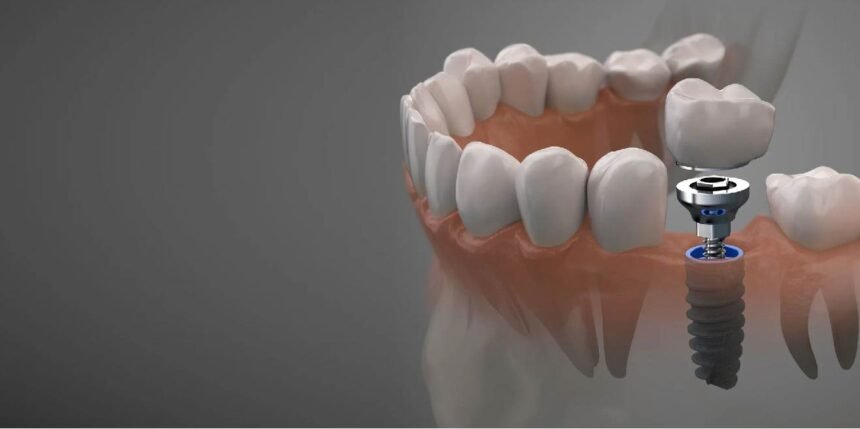If you’ve recently had a tooth implant or are considering one, you’re probably wondering what the healing process involves. Knowing what to expect can help reduce worries and ensure you take the right steps to care for yourself. This guide will walk you through the key stages of healing after a tooth implant and offer tips for a smooth recovery.
What is a Tooth Implant?
A tooth implant is a small titanium post that is surgically placed into your jawbone to replace a missing tooth. Over time, the implant bonds with your jawbone, creating a stable foundation for a crown, bridge, or denture. While the results are worth it, the process does involve some healing time, so understanding how this typically unfolds can help you prepare for what’s ahead.
The Stages of Healing After a Tooth Implant
1. Immediately After the Procedure (First 24–48 Hours)
After the surgery, it’s normal to experience some discomfort, swelling, and minor bleeding around the implant site. Your dentist or oral surgeon will provide specific instructions to manage these symptoms, which may include:
- Applying an ice pack to reduce swelling.
- Taking prescribed or over-the-counter pain medication as advised.
- Sticking to a soft-food diet to avoid disturbing the implant site.
- Avoiding smoking, alcohol, and strenuous physical activity.
During this time, be sure to follow all post-operative care instructions to help prevent complications like infection.
2. The First Week
Within the first week, you’ll notice the initial swelling and discomfort begin to subside. At this stage:
- Stick to foods that are easy to chew, such as soups, mashed potatoes, and smoothies.
- Continue to follow good oral hygiene practices, but be gentle around the implant site. Your dentist may recommend using a special mouthwash to keep the area clean.
Call your dentist if you notice any concerning symptoms, such as severe pain, prolonged bleeding, or signs of infection (e.g., persistent swelling or pus).
3. The Initial Healing Phase (2–6 Weeks)
During the next few weeks, your body focuses on creating a strong bond between the implant and your jawbone through a process called osseointegration. This is crucial for the long-term stability of your implant. While your implant area continues to heal:
- Gradually reintroduce firmer foods into your diet as comfort permits.
- Maintain excellent oral hygiene, brushing gently around the surgical site.
- Be cautious of putting unnecessary pressure on the implant.
Although the healing process is well underway, keep in mind that it can take several months for complete osseointegration to occur.
4. Final Healing and Crown Placement (3–6 Months)
Once your implant has fully integrated with your jawbone, your dentist will add the final restoration, such as a crown. This process involves taking impressions of your mouth to create a custom crown that matches the color and shape of your natural teeth.
After the crown is placed, your implant should look, feel, and function like a natural tooth! While the healing process is complete, regular dental care and check-ups are essential to ensure the long-term success of your implant.
Tips for a Smooth Recovery
- Follow Your Dentist’s Advice: From medication schedules to oral hygiene routines, these instructions are designed to promote healing and reduce complications.
- Rest and Hydrate: Proper rest and hydration can boost your body’s natural healing processes.
- Maintain Oral Health: Gently brush and floss around the implant, and visit your dentist regularly for check-ups.
- Avoid Risky Habits: Smoking and chewing tobacco can slow healing and increase the risk of implant failure.
When to Contact Your Dentist
While most people heal smoothly after a tooth implant, keep an eye out for any unusual symptoms, such as:
- Severe pain that doesn’t improve with medication.
- Infection symptoms (redness, swelling, or pus).
- An implant that feels loose.
If you experience any of these issues, don’t hesitate to contact your dentist or oral surgeon right away. For services in cosmetic dentistry like those in Pasco, WA, seek professional help promptly.
The Long-Term Outlook for Your Tooth Implant
With proper care and maintenance, a dental implant can last 15 years or more. Maintaining healthy habits—like regular brushing, flossing, and dental check-ups—will help you enjoy the full benefits of your new, confident smile.
Conclusion
Now that you know what to expect during the healing process after a tooth implant, you can feel more prepared and confident as you undergo this procedure. Remember to follow your dentist’s instructions and maintain good oral hygiene for the best long-term results.







